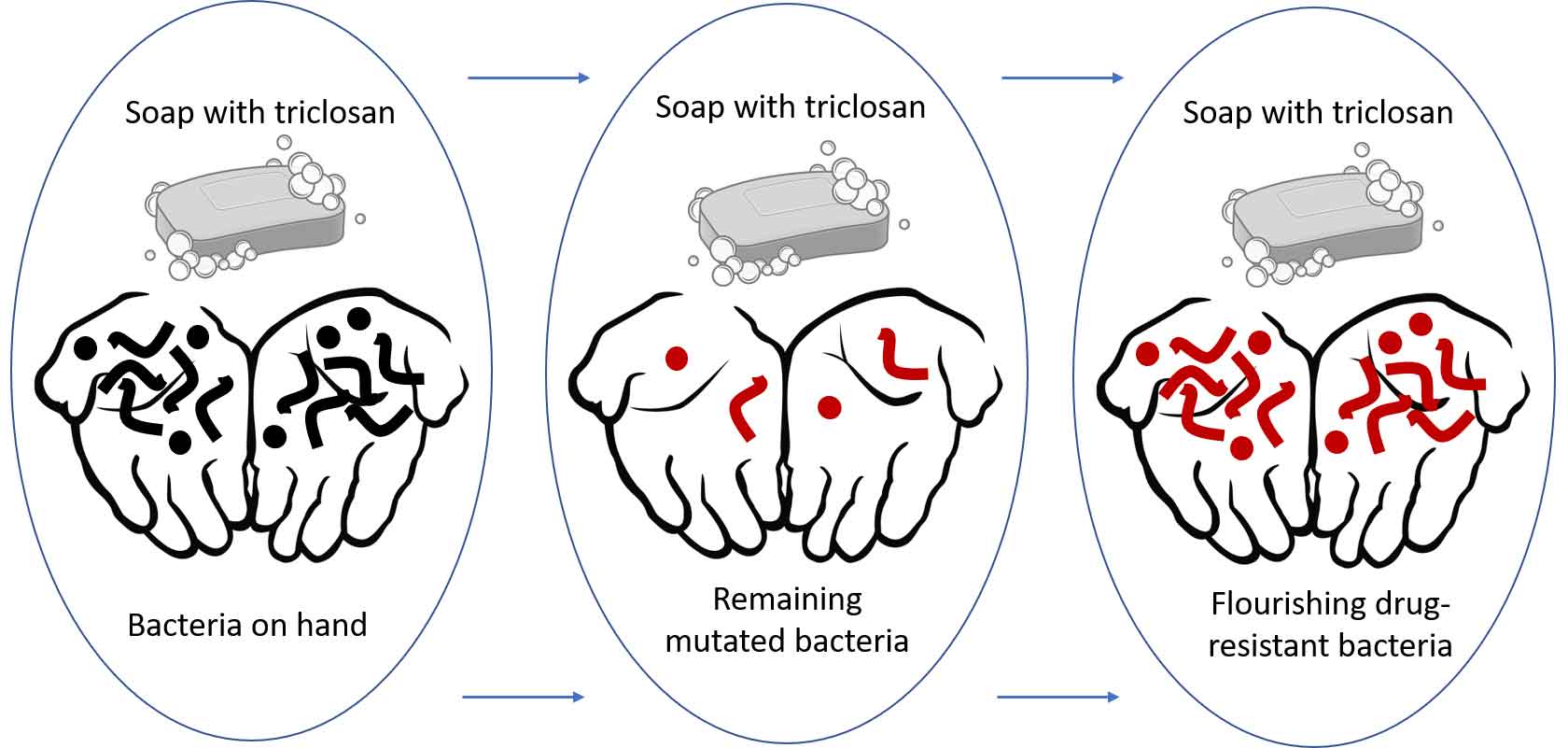The Truth Behind Anti-bacterial Soaps!
Have you ever made the choice of picking an antibacterial soap over any regular soap because it seems safer? Have you ever come across a media message on the magical benefits of a soap that kills all the germs? In most probability you have! So are these soaps really better or even more harmful than just any “ordinary soap”?
The fact is that these antibacterial soaps that you use are neither better nor safe for daily use. In a survey of about 2000 ‘antibacterial’ or ‘antimicrobial’ soaps, 93% of them contain an active ingredient called Triclosan, a chemical component that has been banned by the US Food and Drug Administration (FDA) as a part of the 24 chemical list of over-the-counter (OTC) drugs. There has been no conclusive research that proves ‘antibacterial’ soaps to be better than the regular ones.
Triclosan works by breaking open cell walls of bacteria, thereby killing them. This action takes several hours to work, and therefore is useless at performing its task during the process of handwashing. There exists proof of the contrary that active ingredients like triclosan and triclocarban may have disastrous long term consequences on our health and on the environment.
Where can triclosan be found?

It is found widely in consumer products especially in beauty and hygiene category such as soaps, detergents, deodorants, mouthwashes, toothpastes, shower gels and in surgical cleaning treatments. Residue of the compound can also be found in kitchen utensils, toys and textiles. While triclosan is an ingredient generally found in liquid soaps, triclocarban a compound with similar structure and mechanism can be found more in bar soaps. Famous soaps like Reckitt Benckiser’s Dettol, Godrej’s Cinthol and Dabur’s Fem contain triclosan and triclocarban.
So what’s the real issue?
Triclosan is an antibacterial and antifungal ingredient of soaps. It is said to be detrimental to the long term health of humans as an endocrine disruptor, assists in the creation of drug resistant bacteria and has the potential of being harmful to the environment.
Triclosan gets absorbed into the system either by skin or mouth. In 2003-2004, when 2500 subjects’ urine samples were tested, around 75% of these people had triclosan in their urine stream. As numerous antibacterial or antimicrobial products containing triclosan are used by the pregnant women and small children, it can cause adverse health effects to them.

Tufts University professor Stuart Levy has shown that triclosan can help cause bacteria to mutate into forms that can resist the chemical’s effects. As a consequence of systematic and continuous exposure to non-lethal quantities of antibacterial compounds, pathogens and microorganisms develop resistance to antibiotics.
Triclosan has been found to be pervasive in our environment. A 2011 study published in the Journal of Hazardous Materials was done to assess the risk of triclosan, carbamazepine and parabens in three Indian rivers – Cauvery, Vellar and Tamiraparani and the Pichavaram mangrove in Tamil Nadu. It was found that triclosan concentrations were ‘amongst the highest detected in surface waters’ majorly due to industrial effluents. Even cleaning up triclosan from wastewater is not completely efficient. Around 97% of triclosan can be cleaned up from effluent treatment plants, but the cleaned up ‘sludge’ with triclosan is either incinerated or dumped in landfills. The landfill waste re-enters the environment landscape and pollutes it. Lack of regulation of triclosan could pose a long term public health concern for India.
 Bioaccumulation occurs when a substance accumulates in a body over a period of time. This occurs as a result of rate of excretion or metabolic transformation of a substance is lower than its rate of intake. As the triclosan in the water cannot be degraded, its concentrations keeps building over time in water bodies and marine organisms. Bioaccumulation in this compound has been found in algae, aquatic blackworms, dolphins, fish, and to a lesser extent in humans. These bioaccumulation pathways can have potential negative consequences, such as the growth of mutated antibody resistant bacteria in our water bodies and across the food chain. Toxicity due to triclosan in sewers, lakes, rivers and the ocean is can pose a huge threat to our ecological landscape in the long run.
Bioaccumulation occurs when a substance accumulates in a body over a period of time. This occurs as a result of rate of excretion or metabolic transformation of a substance is lower than its rate of intake. As the triclosan in the water cannot be degraded, its concentrations keeps building over time in water bodies and marine organisms. Bioaccumulation in this compound has been found in algae, aquatic blackworms, dolphins, fish, and to a lesser extent in humans. These bioaccumulation pathways can have potential negative consequences, such as the growth of mutated antibody resistant bacteria in our water bodies and across the food chain. Toxicity due to triclosan in sewers, lakes, rivers and the ocean is can pose a huge threat to our ecological landscape in the long run.
Action taken elsewhere
The European Union has set a maximum concentration of triclosan in cosmetics and mouthwash and has banned it in all shaving products. As a consequence, around 200 scientists and health professionals have signed a precautionary measure which says that triclosan and triclocarban should be used if their positive effects can be substantiated.
Where do we go from here?
Central Drug Standard Control Organization (CDSCO) is the regulatory body of pharmaceuticals and medical devices in India and according to one of their officials, as the ban in USA is due to lack of data, they are unclear on how to proceed in the Indian context. However, they are planning to review the ruling soon. In terms of policy-making, lack of awareness at government and public levels has resulted in triclosan still being used daily in antibacterial soaps in urban and rural areas, where these soaps are extensively sold.
The first step towards addressing these challenges is to raise awareness on the lack of research on triclosan and the potential harm it may cause to our bodies and the environment.
We can also take a step towards purchasing soaps that do not contain triclosan or use US CDC recommended 60% alcohol based hand sanitizer!



